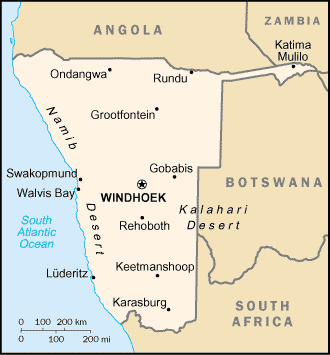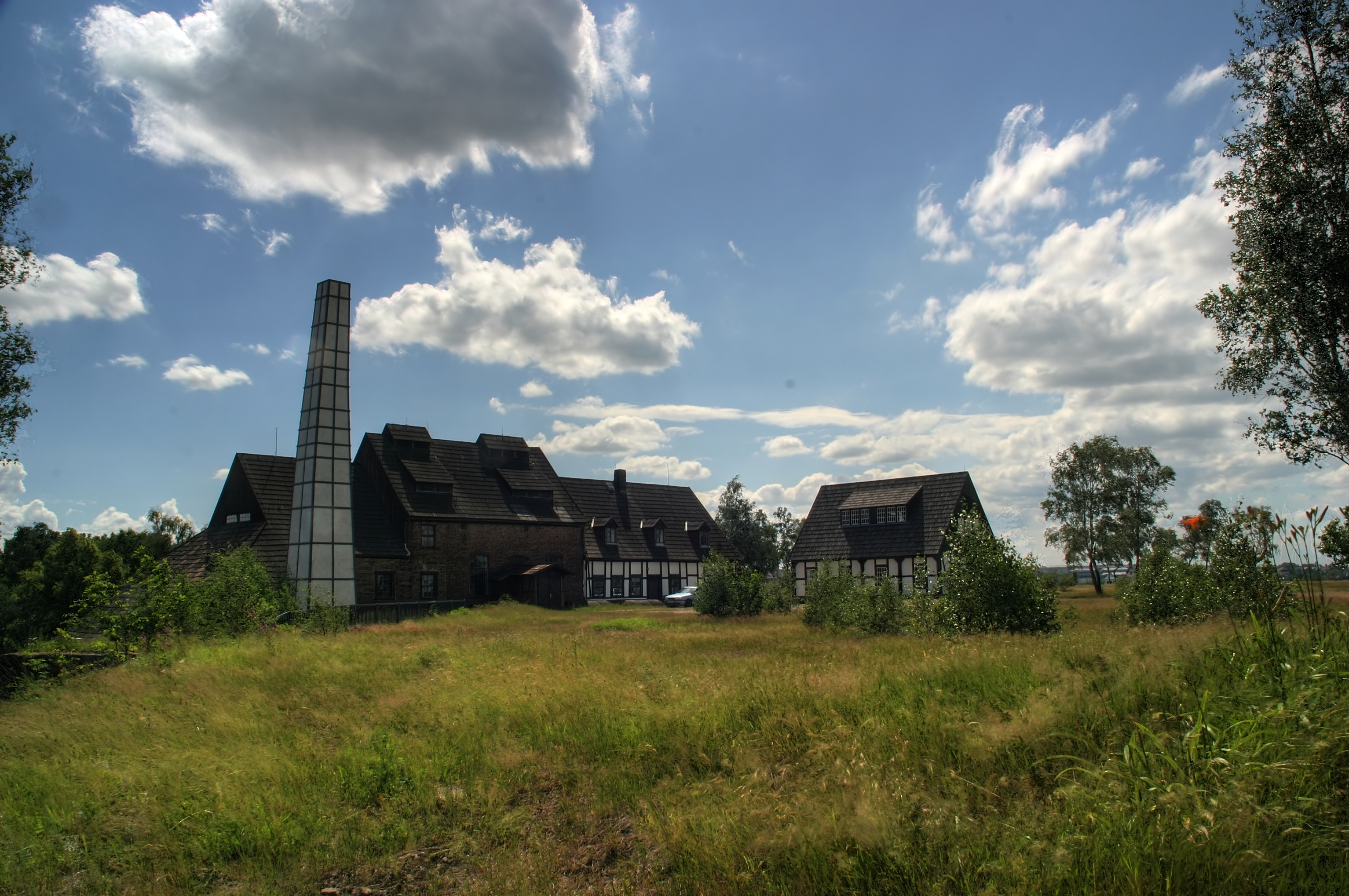|
Black Triangle (region)
The Black Triangle (german: Schwarzes Dreieck) is the border region between Germany, Poland and the Czech Republic, long characterized by extremely high levels of pollution. The term was coined in the 1980s. For decades, industrially produced air pollutants (chiefly sulfur dioxide), water pollution, acid rain and other effects took an enormous toll on the health of local residents and the surrounding environment. After the Revolutions of 1989 in Eastern Europe, the three nations acted to cut emissions. This has resulted in significant environmental improvement. Geography In shape the "triangle" is more similar to a crescent, an industrial corridor roughly 60 kilometers wide, lying on either side of the northern Czech border extending from the German town of Bad Brambach on the west to the Polish town of Bystrzyca Kłodzka at the eastern end. The approximate center is the national tripoint at Zittau. Politically the "triangle" consists of: * Germany's two Regierungsbezirk, loc ... [...More Info...] [...Related Items...] OR: [Wikipedia] [Google] [Baidu] |
Salient (geography)
A salient (also known as a panhandle or bootheel) is an elongated protrusion of a geopolitical entity, such as a subnational entity or a sovereign state. While similar to a peninsula in shape, a salient is most often not surrounded by water on three sides. Instead, it has a land border on at least two sides and extends from the larger geographical body of the administrative unit. In American English, the term panhandle is often used to describe a relatively long and narrow salient, such as the westernmost extensions of Florida and Oklahoma. Another term is bootheel, used for the Missouri Bootheel and New Mexico Bootheel areas. Origin The term ''salient'' is derived from military salients. The term "panhandle" derives from the analogous part of a cooking pan, and its use is generally confined to North America. The salient shape can be the result of arbitrarily drawn international or subnational boundaries, though the location of administrative borders can also take into acco ... [...More Info...] [...Related Items...] OR: [Wikipedia] [Google] [Baidu] |
Nickel
Nickel is a chemical element with symbol Ni and atomic number 28. It is a silvery-white lustrous metal with a slight golden tinge. Nickel is a hard and ductile transition metal. Pure nickel is chemically reactive but large pieces are slow to react with air under standard conditions because a passivation layer of nickel oxide forms on the surface that prevents further corrosion. Even so, pure native nickel is found in Earth's crust only in tiny amounts, usually in ultramafic rocks, and in the interiors of larger nickel–iron meteorites that were not exposed to oxygen when outside Earth's atmosphere. Meteoric nickel is found in combination with iron, a reflection of the origin of those elements as major end products of supernova nucleosynthesis. An iron–nickel mixture is thought to compose Earth's outer and inner cores. Use of nickel (as natural meteoric nickel–iron alloy) has been traced as far back as 3500 BCE. Nickel was first isolated and classified as an e ... [...More Info...] [...Related Items...] OR: [Wikipedia] [Google] [Baidu] |
Cobalt
Cobalt is a chemical element with the symbol Co and atomic number 27. As with nickel, cobalt is found in the Earth's crust only in a chemically combined form, save for small deposits found in alloys of natural meteoric iron. The free element, produced by reductive smelting, is a hard, lustrous, silver-gray metal. Cobalt-based blue pigments ( cobalt blue) have been used since ancient times for jewelry and paints, and to impart a distinctive blue tint to glass, but the color was for a long time thought to be due to the known metal bismuth. Miners had long used the name ''kobold ore'' (German for ''goblin ore'') for some of the blue-pigment-producing minerals; they were so named because they were poor in known metals, and gave poisonous arsenic-containing fumes when smelted. In 1735, such ores were found to be reducible to a new metal (the first discovered since ancient times), and this was ultimately named for the ''kobold''. Today, some cobalt is produced specifically from one of ... [...More Info...] [...Related Items...] OR: [Wikipedia] [Google] [Baidu] |
Zinc
Zinc is a chemical element with the symbol Zn and atomic number 30. Zinc is a slightly brittle metal at room temperature and has a shiny-greyish appearance when oxidation is removed. It is the first element in group 12 (IIB) of the periodic table. In some respects, zinc is chemically similar to magnesium: both elements exhibit only one normal oxidation state (+2), and the Zn2+ and Mg2+ ions are of similar size.The elements are from different metal groups. See periodic table. Zinc is the 24th most abundant element in Earth's crust and has five stable isotopes. The most common zinc ore is sphalerite (zinc blende), a zinc sulfide mineral. The largest workable lodes are in Australia, Asia, and the United States. Zinc is refined by froth flotation of the ore, roasting, and final extraction using electricity ( electrowinning). Zinc is an essential trace element for humans, animals, plants and for microorganisms and is necessary for prenatal and postnatal development. It ... [...More Info...] [...Related Items...] OR: [Wikipedia] [Google] [Baidu] |
Silver
Silver is a chemical element with the Symbol (chemistry), symbol Ag (from the Latin ', derived from the Proto-Indo-European wikt:Reconstruction:Proto-Indo-European/h₂erǵ-, ''h₂erǵ'': "shiny" or "white") and atomic number 47. A soft, white, lustrous transition metal, it exhibits the highest electrical conductivity, thermal conductivity, and reflectivity of any metal. The metal is found in the Earth's crust in the pure, free elemental form ("native silver"), as an alloy with gold and other metals, and in minerals such as argentite and chlorargyrite. Most silver is produced as a byproduct of copper, gold, lead, and zinc Refining (metallurgy), refining. Silver has long been valued as a precious metal. Silver metal is used in many bullion coins, sometimes bimetallism, alongside gold: while it is more abundant than gold, it is much less abundant as a native metal. Its purity is typically measured on a per-mille basis; a 94%-pure alloy is described as "0.940 fine". As one of th ... [...More Info...] [...Related Items...] OR: [Wikipedia] [Google] [Baidu] |
Freiberg Mining Field
The Freiberg Mining Field (german: Freiberger Revier or ''Freiberger Bergbaurevier'') is an ore field which is located on an ore deposit of precious and non-ferrous metals roughly 35 x 40 kilometres in area in the lower Eastern Ore Mountains of Saxony, Germany. Mining has been carried out here since the last third of the 12th century. Parts of this region, along with other nearby sites in the Erzgebirge/Krušnohoří Mining Region were inscribed on the UNESCO World Heritage List in 2019 because of its testimony of continuous extraction for centuries and its status as the nexus for many technological developments in ore mining. The mining region, in the broadest sense, is centred on Freiberg, but extends beyond that town's borough into the municipalities of Halsbrücke, Hilbersdorf, Bobritzsch, Weißenborn, Oberschöna and the boroughs of Brand-Erbisdorf and Großschirma. In a narrower sense the name refers to the area covered by the Freiburg and Halsbrück mining territories ( ... [...More Info...] [...Related Items...] OR: [Wikipedia] [Google] [Baidu] |
Christiansdorf (Freiberg)
Christiansdorf, historically spelt ''Christianesdorph'' in 1183 and ''Christianisdorf'' in 1185, was a forest settlement in the Duchy of Saxony (the present day German state of Saxony) that only existed for a few years, but is credited as being the first place in the Ore Mountains that silver ore was discovered. The little mining settlement in the March of Meissen and was a forerunner of the present town of Freiberg, which itself was founded in the 1160s. Christiansdorf was located on the so-called ''Schüppchenberg'' hill, where the cul-de-sac of ''Berggasse'' now is. According to oral tradition and legend, the first ore - sterling silver - in the Freiberg Mining Field The Freiberg Mining Field (german: Freiberger Revier or ''Freiberger Bergbaurevier'') is an ore field which is located on an ore deposit of precious and non-ferrous metals roughly 35 x 40 kilometres in area in the lower Eastern Ore Mountains of Sa ..., and also in the whole Ore Mountains, was discovered on th ... [...More Info...] [...Related Items...] OR: [Wikipedia] [Google] [Baidu] |
Berggeschrey
Berggeschrey or Berggeschrei ("mining clamour") was a German term for the rapid spread of news on the discovery of rich ore deposits that led to the rapid establishment of a mining region, as in the silver rush in the early days of silver ore mining in the Ore Mountains. It is similar in some respects to the gold rush in North America. First Berggeschrey Even as the first settlements were established there were small finds tin, iron and copper. But when, in 1168, rich silver finds were discovered in the area of Freiberg, it precipitated the ''First Berggeschrey''. Upon hearing the news of rich silver deposits miners, traders, charcoal burners and vagabonds quickly poured into this, at that time, inhospitable area. ''"Where a man wants to look for ore, he is allowed to do so with rights"'' the Margrave of Meissen, owner of the rights to use the mountain (mining rights), had asserted to the settlers flooding into the area. In order to settle the miners, who mostly came from the ... [...More Info...] [...Related Items...] OR: [Wikipedia] [Google] [Baidu] |
Bohemia
Bohemia ( ; cs, Čechy ; ; hsb, Čěska; szl, Czechy) is the westernmost and largest historical region of the Czech Republic. Bohemia can also refer to a wider area consisting of the historical Lands of the Bohemian Crown ruled by the Bohemian kings, including Moravia and Czech Silesia, in which case the smaller region is referred to as Bohemia proper as a means of distinction. Bohemia was a duchy of Great Moravia, later an independent principality, a kingdom in the Holy Roman Empire, and subsequently a part of the Habsburg monarchy and the Austrian Empire. After World War I and the establishment of an independent Czechoslovak state, the whole of Bohemia became a part of Czechoslovakia, defying claims of the German-speaking inhabitants that regions with German-speaking majority should be included in the Republic of German-Austria. Between 1938 and 1945, these border regions were joined to Nazi Germany as the Sudetenland. The remainder of Czech territory became the Second ... [...More Info...] [...Related Items...] OR: [Wikipedia] [Google] [Baidu] |
Saxony
Saxony (german: Sachsen ; Upper Saxon: ''Saggsn''; hsb, Sakska), officially the Free State of Saxony (german: Freistaat Sachsen, links=no ; Upper Saxon: ''Freischdaad Saggsn''; hsb, Swobodny stat Sakska, links=no), is a landlocked state of Germany, bordering the states of Brandenburg, Saxony-Anhalt, Thuringia, Bavaria, as well as the countries of Poland and the Czech Republic. Its capital is Dresden, and its largest city is Leipzig. Saxony is the tenth largest of Germany's sixteen states, with an area of , and the sixth most populous, with more than 4 million inhabitants. The term Saxony has been in use for more than a millennium. It was used for the medieval Duchy of Saxony, the Electorate of Saxony of the Holy Roman Empire, the Kingdom of Saxony, and twice for a republic. The first Free State of Saxony was established in 1918 as a constituent state of the Weimar Republic. After World War II, it was under Soviet occupation before it became part of the communist East Ger ... [...More Info...] [...Related Items...] OR: [Wikipedia] [Google] [Baidu] |









